Price hikes and currency woes have boosted sales figures but the time seems ripe to add some real value to the market and encourage trading up, reports Graham Holter
There was something missing from the wine trade last year: nobody was talking premiumisation.
It had been the buzzword of 2008 and much of the preceding decade, but consumer confidence had crashed and all eyes were on the three-for-£10 deals that were delivering much-needed volume for retailers and suppliers.
Yet the wine category hasn't been battered as hard as many feared. Take-home sales from supermarkets have grown 11.8% to £4.2bn, with volumes up 4.5% [Kantar Worldpanel 52w/e 23 January]. Even Champagne appears to be flourishing, with sales up 25.8% by value and 20.3% by volume.
On the downside, much of the value growth has been fuelled by input cost-driven price rises the result of duty hikes and the weak pound while promotions have played a major role in propping up volumes, particularly of Champagne. But, as the economy recovers, is now the time to try to put some genuine value back in?
Brand owners have been increasingly willing to pass on the extra costs they are facing, even if it means a short-term dip in sales. Volume sales declines of Gallo (29.3%) and Jacob's Creek (16.8%) were no surprise to anyone who has studied pricing trends in the wine market [Nielsen].
Currency movements have also played a major part. The march of the rand against the pound meant that a bottle of South African wine, priced £2 ex-cellar in September 2008, cost more than £2.80 by January 2010 before any other cost increases or taxes were applied. Data collected by Guy Anderson Wines shows the effect is almost as pronounced on Australian wine (up to about £2.75 in the same exercise) and for New Zealand exports (up to just under £2.60). The euro and the US dollar also moved in the wrong direction, from a UK wine importer's point of view.
But, with the economy starting to turn the corner, Foster's EMEA UK commercial director Neil Barker believes it is time to resume talk of trading up. It is already happening on the quiet, he says.
"If you look at the past 12 months we have seen some fairly significant premiumisation in the off-trade," he says. "There's been 18% growth in the above-£8 bracket in the year to February, in the midst of a pretty bleak recession. There is evidence that, later in the week, people will treat themselves to a better bottle of wine, and that's what's fuelling growth in that price band."
Despite Barker's optimism, value sales of Foster's Wolf Blass brand, which includes wines priced above £8, have fallen 18% to £90m, while value sales of its more everyday brand Lindemans are up 9% to £129m [Nielsen 52w/e 23 January].
Champagne sales have also perked up having plummeted the year before. Most of the growth has come in the past few weeks, with value sales rising 29.1% by value and 45.4% by volume [Nielsen 8w/e 20 March 2010]. Nielsen believes price promotions are behind the latest surge in sales the average price fell from £18.38 in March 2009 to £17.74 in March 2010, despite the impact of duty increases. And the wider sparkling category is in growth, with sales of Prosecco soaring 79.5% and Crémant the hottly tipped newcomer.
However, Sainsbury's wine buyer Julian Dyer who says he has seen a resurgence of sales of classic European wines is careful not to overstate the case for consumers trading up in 2010. "I don't agree the recession was last year and is over this year. We'll have to work blooming hard as retailers to drive sales," he says.
Foster's Barker points out that premiumisation doesn't mean shoppers will stampede to £7 wines. "People who buy three-for-£10 aren't suddenly going to start buying Châteauneuf," he says. "We're talking about getting the marketplace back in balance, and that will happen gradually. It can involve moving part of the three-for-£10 business to £4; it can be about NPD; it can be about a mix of promotions."
This year will be about value related to price and quality, says E&J Gallo sales director Mark Tinsley. "Consumers are looking at promotions and asking: are they too cheap to be good?"
There is evidence that the three-for-£10 deal is under pressure (see Promowatch box). According to Kantar, Asda which has built much of its wine offer around three-for-£10 is seeing a "stagnation" in this kind of multibuy.
"Three-for-£10 has a role to play in the short term, but not ongoing, as the costings are unsustainable," says Concha y Toro UK head of grocery and convenience, Paul Manders. The company's eponymous brand and Isla Negra have grown significantly over the past year, with sales up 30% and 48.2% respectively to just over £75m each [Nielsen 52w/e 23 January].
"Any category that is over-reliant on disproportionate price discounting is vulnerable," says Manders. "An area to continue developing is formats, for example 50cl, particularly for our premium brands. We may see retailers making more space for new wine styles and formats."
The Co-operative Group is currently reassessing its wine offer. "This may mean increasing the premium range in stores that have a customer base willing to spend more on wine," says Vicky Wood, category development manager for BWS. "But it may also mean taking premium wines out of some lower demographic stores.
"Our job, in partnership with brand owners, is to educate consumers and give them reasons to trade up. This could include offering [premium] lines at introductory prices and educating consumers about why they should spend more."
Tesco has already decided to embrace premium wines; in March it told suppliers it planned to double sales of its Finest wine range and sell more wine off-promotion.
Sainsbury's is focusing even more strongly on premium, experimenting with BWS merchandising that could lead to a fundamental overhaul of the way wine is sold in the grocery channel. Dyer is keeping details of the project under wraps but is open about its objectives.
"We're doing a lot of work around how we can grow premium sales," he says. "It's about how you communicate that range to consumers. As a supermarket we need to be better at flagging up why consumers should pay more for a given wine and helping them make informed decisions. We're doing a lot of work around signage and display to encourage consumers to trade up."
What's lacking are wine sections that are attractive and help consumers understand what they're buying. "The biggest trick for the future is improving merchandising," he says. "Break up the wall of wine and create a bit more legibility to displays."
Whether better merchandising will be enough to send consumers in search of fine vintages remains to be seen.
Focus On Wine & Champagne
There was something missing from the wine trade last year: nobody was talking premiumisation.
It had been the buzzword of 2008 and much of the preceding decade, but consumer confidence had crashed and all eyes were on the three-for-£10 deals that were delivering much-needed volume for retailers and suppliers.
Yet the wine category hasn't been battered as hard as many feared. Take-home sales from supermarkets have grown 11.8% to £4.2bn, with volumes up 4.5% [Kantar Worldpanel 52w/e 23 January]. Even Champagne appears to be flourishing, with sales up 25.8% by value and 20.3% by volume.
On the downside, much of the value growth has been fuelled by input cost-driven price rises the result of duty hikes and the weak pound while promotions have played a major role in propping up volumes, particularly of Champagne. But, as the economy recovers, is now the time to try to put some genuine value back in?
Brand owners have been increasingly willing to pass on the extra costs they are facing, even if it means a short-term dip in sales. Volume sales declines of Gallo (29.3%) and Jacob's Creek (16.8%) were no surprise to anyone who has studied pricing trends in the wine market [Nielsen].
Currency movements have also played a major part. The march of the rand against the pound meant that a bottle of South African wine, priced £2 ex-cellar in September 2008, cost more than £2.80 by January 2010 before any other cost increases or taxes were applied. Data collected by Guy Anderson Wines shows the effect is almost as pronounced on Australian wine (up to about £2.75 in the same exercise) and for New Zealand exports (up to just under £2.60). The euro and the US dollar also moved in the wrong direction, from a UK wine importer's point of view.
But, with the economy starting to turn the corner, Foster's EMEA UK commercial director Neil Barker believes it is time to resume talk of trading up. It is already happening on the quiet, he says.
"If you look at the past 12 months we have seen some fairly significant premiumisation in the off-trade," he says. "There's been 18% growth in the above-£8 bracket in the year to February, in the midst of a pretty bleak recession. There is evidence that, later in the week, people will treat themselves to a better bottle of wine, and that's what's fuelling growth in that price band."
Despite Barker's optimism, value sales of Foster's Wolf Blass brand, which includes wines priced above £8, have fallen 18% to £90m, while value sales of its more everyday brand Lindemans are up 9% to £129m [Nielsen 52w/e 23 January].
Champagne sales have also perked up having plummeted the year before. Most of the growth has come in the past few weeks, with value sales rising 29.1% by value and 45.4% by volume [Nielsen 8w/e 20 March 2010]. Nielsen believes price promotions are behind the latest surge in sales the average price fell from £18.38 in March 2009 to £17.74 in March 2010, despite the impact of duty increases. And the wider sparkling category is in growth, with sales of Prosecco soaring 79.5% and Crémant the hottly tipped newcomer.
However, Sainsbury's wine buyer Julian Dyer who says he has seen a resurgence of sales of classic European wines is careful not to overstate the case for consumers trading up in 2010. "I don't agree the recession was last year and is over this year. We'll have to work blooming hard as retailers to drive sales," he says.
Foster's Barker points out that premiumisation doesn't mean shoppers will stampede to £7 wines. "People who buy three-for-£10 aren't suddenly going to start buying Châteauneuf," he says. "We're talking about getting the marketplace back in balance, and that will happen gradually. It can involve moving part of the three-for-£10 business to £4; it can be about NPD; it can be about a mix of promotions."
This year will be about value related to price and quality, says E&J Gallo sales director Mark Tinsley. "Consumers are looking at promotions and asking: are they too cheap to be good?"
There is evidence that the three-for-£10 deal is under pressure (see Promowatch box). According to Kantar, Asda which has built much of its wine offer around three-for-£10 is seeing a "stagnation" in this kind of multibuy.
"Three-for-£10 has a role to play in the short term, but not ongoing, as the costings are unsustainable," says Concha y Toro UK head of grocery and convenience, Paul Manders. The company's eponymous brand and Isla Negra have grown significantly over the past year, with sales up 30% and 48.2% respectively to just over £75m each [Nielsen 52w/e 23 January].
"Any category that is over-reliant on disproportionate price discounting is vulnerable," says Manders. "An area to continue developing is formats, for example 50cl, particularly for our premium brands. We may see retailers making more space for new wine styles and formats."
The Co-operative Group is currently reassessing its wine offer. "This may mean increasing the premium range in stores that have a customer base willing to spend more on wine," says Vicky Wood, category development manager for BWS. "But it may also mean taking premium wines out of some lower demographic stores.
"Our job, in partnership with brand owners, is to educate consumers and give them reasons to trade up. This could include offering [premium] lines at introductory prices and educating consumers about why they should spend more."
Tesco has already decided to embrace premium wines; in March it told suppliers it planned to double sales of its Finest wine range and sell more wine off-promotion.
Sainsbury's is focusing even more strongly on premium, experimenting with BWS merchandising that could lead to a fundamental overhaul of the way wine is sold in the grocery channel. Dyer is keeping details of the project under wraps but is open about its objectives.
"We're doing a lot of work around how we can grow premium sales," he says. "It's about how you communicate that range to consumers. As a supermarket we need to be better at flagging up why consumers should pay more for a given wine and helping them make informed decisions. We're doing a lot of work around signage and display to encourage consumers to trade up."
What's lacking are wine sections that are attractive and help consumers understand what they're buying. "The biggest trick for the future is improving merchandising," he says. "Break up the wall of wine and create a bit more legibility to displays."
Whether better merchandising will be enough to send consumers in search of fine vintages remains to be seen.
Focus On Wine & Champagne









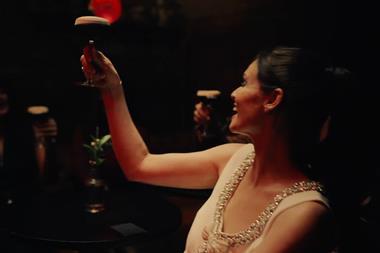


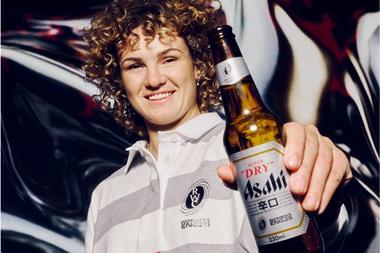
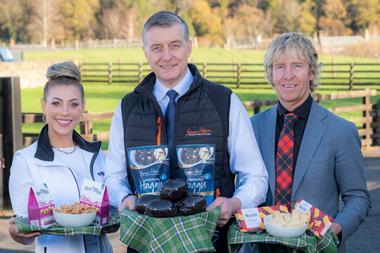
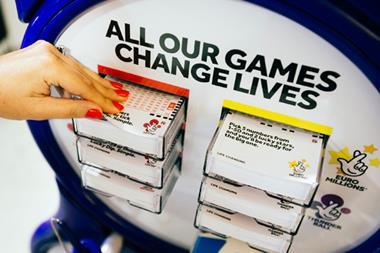

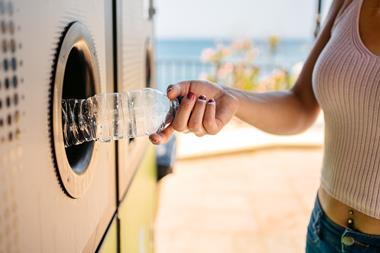

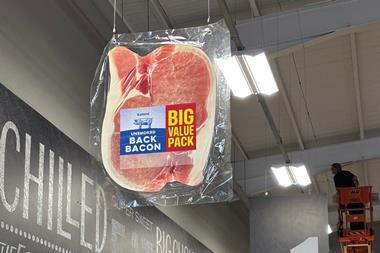
No comments yet